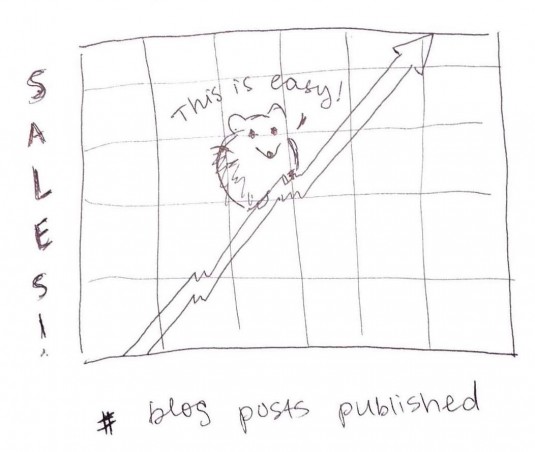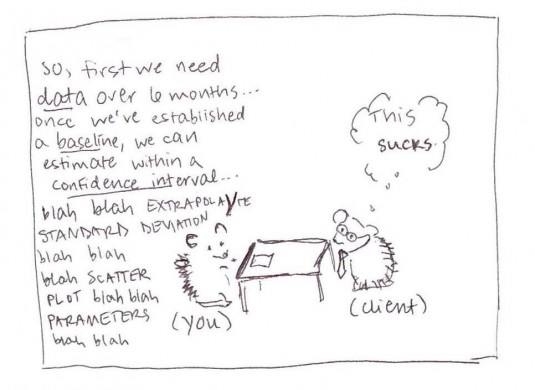Getting Prickly About ROI
 Whether you like it or not, content marketing and statistics go hand in hand. It’s hard to gauge an effect without putting numbers to it. Sometimes, “building your brand” and “telling your business’s story” aren’t enough. Sometimes, you have to give—gulp!—analytics.
Whether you like it or not, content marketing and statistics go hand in hand. It’s hard to gauge an effect without putting numbers to it. Sometimes, “building your brand” and “telling your business’s story” aren’t enough. Sometimes, you have to give—gulp!—analytics.

In a perfect world, it would be easy to see the relationship between investing in content marketing and ROI.
Perfect world:
But we live in a beautifully flawed and imperfect world. A world of qualitative and quantitative data, a world of confounding variables, a world that can be hard to measure.
Beautifully flawed, imperfect world:
So what do you do? Teach your client statistics?
The truth is, cause and effect are rarely easy to measure, in any realm. It’s even hard to judge the effect of something as seemingly simple as taking a pill. That’s one reason why it takes an average of 12 years for new drugs to make it to market.
What’s more, as Seth Godin points out in a recent interview, applying cold and fast numbers to content marketing has a deteriorating effect on the content itself:
“The challenge that we have when we industrialize content is we are asking people who don’t care to work their way through a bunch of checklists to make a number go up, as opposed to being human beings connecting with other human beings.”
Confession time: I’m a numbers girl at heart. I think quantitative analysis of a well-designed experiment is a thing of beauty. Bring on the data and the software that generates those gorgeous charts. Let’s talk standard deviations!
Which is why it breaks my heart when folks try to apply statistics to content marketing. It’s because, in my personal opinion, you can’t.
Why?
Content marketing is an art.

How do you measure art?

Good content marketing is perhaps best measured in the way we “measure” art: by its effect on people’s emotions. By the passion it inspires. By its ability to drive change and unite others. Just because these things are hard to put a number on does not mean they don’t matter, and it’s important to take them into consideration when assessing your return on investment.
Thanks to Aubrae and Kathleen for sharing the Seth Godin blog post, and thanks to Sara for guiding me to this topic!
Enjoy this post? Read more from Kristen Jackson.
Kristen Jackson—Editor



